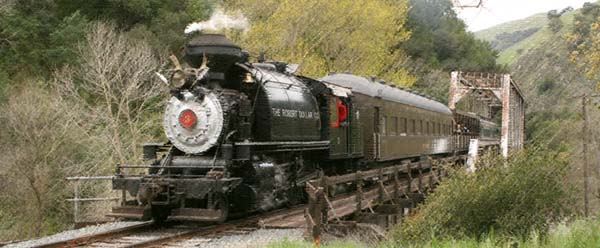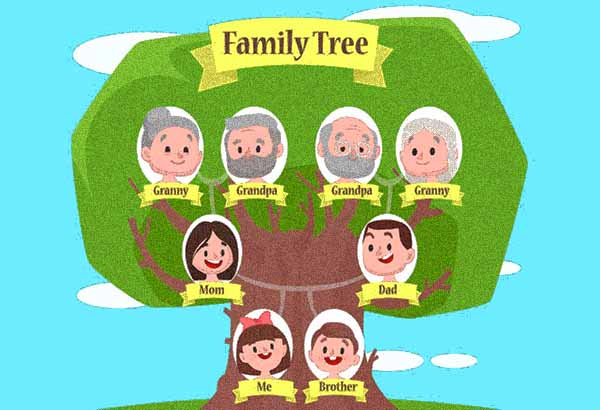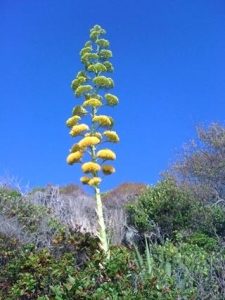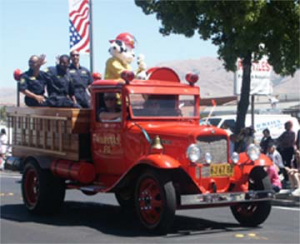In the 1800s the Mexicans, the Gold Rush, the Civil War, and the Transcontental Railroad transformed the Bay Area from a bunch of sleepy cattle ranches to a booming economy.
Read More About the California Pioneer Era
 Milpitas
Milpitas
Images of America
by Robert Burrill
$21.95 or $25 with author signature.
Call 263-5468 to order.
Robert L. Burrill, Milpitas filmmaker and photography teacher for more than 35 years, has combed the archives of the Milpitas Historical Society, private local collections, and his own works to find more than 200 vintage photographs chronicling the heritage, enterprise, and wit of Milpitas from the 1700s to the present day. Read first 31 pages of this book.
 Little Cornfields
Little Cornfields
Hardcover editions of Milpitas : The Century of Little Cornfields 1852 – 1952 by Patricia Loomis are available by making a donation of $18 (or more) to the Milpitas Historical Society. Paperback edition is available for $8.
You are invited to attend one of the Milpitas Historical Society meetings any 2nd Wednesday of each month in the Library at 7p when this book will also be available.
Family Chronicles and Biographies of Milpitas Pioneer Families
- Abel, George E.
Born in Milpitas January 3, 1882. Butcher, farmer.
- Ashley, Aldace N.
Born in Placer County May 13, 1864. Ashley & Co. General merchandise store in Milpitas.
- Ashley, John T.
Born in Vermont June 4, 1830. Father of Aldace and others. Dixon & Ashley merchandise store in Milpitas.
- Bellew, Michael
Born in Meath County, Ireland, in 1830. Took up farming in Milpitas in 1861.
- Boyce, David S
Born in Quebec, Canada, August 18, 1838. Settled in Milpitas in 1863. Blacksmith and carriage maker. Firm name Boyce & Topham.
- Brandt, Charles
Born November 22, 1867. School board member for the Laguna School District in the Milpitas hills.
- Darling, E. W.
Born in Quebec, Canada, December 28, 1834. In 1875 Mr. Darling erected the Milpitas grain warehouses.
- Giacomazzi, Edward P.
Born in San Jose on March 22, 1879. In 1905, he was appointed the postmaster of Milpitas. Founder of the Bank of Milpitas.
- Gibson, Edward O.
Pioneer farmer and stockman.
- Pashote Family
Opereated a store, auto truck business, restaurant, ice-cream parlor and meat market.
- Trimble, John
Born in Missouri Feb. 17, 1828. He raised fruit,berries and grain.
- Winsor Family
Pioneer Blacksmiths of Milpitas.
History of Local Pioneers in the 1800s
Almaden Quicksilver Mining Museum
Mining operations in New Almaden first began in 1845 under the claim of Mexican Cavalry Officer Captain Andres Castillero. Castillero discovered that the red rock used by the local Ohlone Indians to paint them and the walls of the Santa Clara Mission was cinnabar, an ore containing mercury. The valuable mercury was needed to process silver in Mexican silver mines.
Alum Rock Park History
California’s first and oldest park. The park which was founded in 1872, was simply referred to as the “reservation.” The name Alum Rock was derived from a huge rock that was believed to contain a high percentage of alum.
Alviso Adobe Park History
The first story of the Alviso Adobe, which is located near the intersection of Piedmont Road and Calaveras Road, was built some time in 1835 by José Maria de Jesus Alviso, who had been granted title to the land on which it stands by the governor of Alta California, José Castro, on September 23, 1835.
Ardenwood Farm
In 1849 George Washington Patterson joined the stream of young men leaving the Midwest for California’s gold fields. His dreams left little room for failure, but after a year and a half of mining he was ill and broke. And so he turned to work he knew well — farming.
The Bear Flag Revolt
With Fremont’s “army” nearby, and belief in the rumor that Castro was gathering forces to expel the Americans, the local settlers became emboldened enough to steal some horses meant for Castro’s army, then to storm Vallejo’s “fort” at Sonoma June 14, 1846.
California As We Saw It
Exploring the California Gold Rush. By Gary F. Kurutz, Curator of Special Collections, California State Library.
California during the Civil War: 10 Facts
While no battles took place on Californian soil, the state has a rich Civil War history. Learn more about the state of California during the Civil War with these ten facts.
Discovery of Gold in California
It was in the first part of January, 1848, when the gold was discovered at Coloma, where John Sutter was then building a saw-mill. A first-hand account.
Fallon House
Restored to how homes looked during the Civil War era in California, you can easily see this home and the Peralta Adobe next door in one trip.
Frémont in the Conquest of California
In the autumn of 1845 Frémont came on his second exploring expedition to California.
Gold Rush – American Experience on PBS
See if you have what it takes to strike it rich in the gold rush! Choose a character and try to strike it rich in our online role-playing game.
Gold Rush Chronicles
Here before you, in a leather-bound book on an old wooden table, is a history of the great California Gold Rush. Discover the colorful stories that lie unfurled on these pages and unlock a taste of that famous era. Learn how the Gold Rush affected the world not so long ago.
Guadalupe River Park
Local historians have always been aware that a settlement known as the Woolen Mills Chinatown was located near Taylor Street between 1887 and 1902.
History of the Donner Party – C. F. McGlashan
The far-famed Donner Party were, in a peculiar sense, pioneer martyrs of California. Before the discovery of gold, before the highway across the continent was fairly marked out, while untold dangers lurked by the wayside, and unnumbered foes awaited the emigrants, the Donner Party started for California.
Felton Homes and History
Felton had its start in 1843 when Isaac Graham transferred his limber mill from the Zayante land grant to the San Lorenzo River at Fall Creek. Local Felton wiki.
Historic Niles
The community of Niles is rich in history and has gained recognition as a truly unique spot in the San Francisco Bay Area.
History of the University of California
The University of California became a “public trust” in 1879 as part of a larger revision of California’s Constitution approved by California voters. Download full text.
History in the Vines: Fremont’s Wine Legacy
From the Spanish-Mission era up to Prohibition, south Fremont (then called the Washington Township), had once been one of the first and most productive wine regions in California.
The Houghton Donner House
156 E. St. John Street, San Jose, and right in the way of the Civic Center expansion, is a late -Victorian Italianate style and was home to two historically important San Joseans, early mayor Sherman Houghton and his wife, Donner Party survivor Eliza Donner Houghton. “Suspicious” fire burns historic Donner Houghton house to the ground in July 2007. More on the Donner Blog./P>
How California Came to be Admitted
The first Legislature assembled on December 15th for temporary organization in San Jose, the new seat of government. Of more significance, doubtless, was the fact that on the following Thursday, December 20, 1849, the State government of California was formally established. By Rockwell D. Hunt, Ph. D
Joseph D. Grant County Park
In 1839, a 15,000-acre Mexican Land Grant was awarded to Jose de Jesus Bernal and was named Rancho Canada de Pala. Jose de Jesus and his two brothers built adobes around a spring-fed pond on a ridge overlooking the Santa Clara Valley.
Juana Briones
A long-living ranchera acquired a large spread in Santa Clara Valley and shared it with others.
Lighthouses of the United States: Northern California
These early lights, like the Point Pinos Light and the Battery Point Light were built in a what was then a typical New England style. Ironically, there are no examples of this style surviving in New England, so the only place to see these traditional New England lighthouses is in California.Laguna Schoolhouse, Milpitas, CA (1865-1943)
Mexican California
Under Mexican rule governors were encouraged to make more grants for individual ranchos, and these grants were to be outright.
Mexican Years: 1822 to 1846
The early 19th century saw growing discontent in New Spain’s society. Revolts started in 1810 and extended through 1821, when a revolution led to formation of the Mexican Republic.
Mt. View History
In 1851, the Castro family built their first home and, later, donated land to the railroad, creating Mountain View’s first flag stop.
Peralta Family and the Rancho San Antonio
The Peralta Family had a huge rancho that encompassed most of the East Bay from present day El Cerrito down to San Leandro.
Santa Clara Valley Mill & Lumber Company – 1870’s
The demand for firewood and building lumber by the citizens and towns of the Santa Clara Valley produced a road over the summit from Saratoga to the San Lorenzo Valley in 1870.
A short history on wine making in California
The story of wine in California begins with the story of the Spanish in California. Vineyard planting in the state began with the Spanish Franciscan Missionaries starting with California’s first mission: Mission San Diego de Alcalá in 1769. Just as palm trees were planted so there would be palm fronds for Palm Sunday, vineyards were planted so there would be wine for communion. That first variety, planted by Father Junípero Serra, became so ubiquitous that it became known as the Mission grape and was the preeminent variety until 1880.
Stanford Lands
The first parcel, bought in 1876, was 650 acres along San Francisquito Creek. Purchase of adjoining parcels ran the total to 8,180 acres, the whole of which was given to the University in the 1885 Grant of Endowment with the stipulation that it never be sold.
William T. Sherman and Early California History
Sherman arrives in California and describes the Monterey area in 1847. Additional links tell of his experiences during the Gold Rush.
The Winchester Mystery House Story
Not long after Sarah returned to her family and home, another tragedy struck. William, now heir to the Winchester empire, was struck down with pulmonary tuberculosis. He died on March 7, 1881. As a result of his death, Sarah inherited over $20 million dollars, an incredible sum, especially in those days. She also received 48.9 percent of the Winchester Repeating Arms Company and an income of about $1000 per day, which was not taxable until 1913.
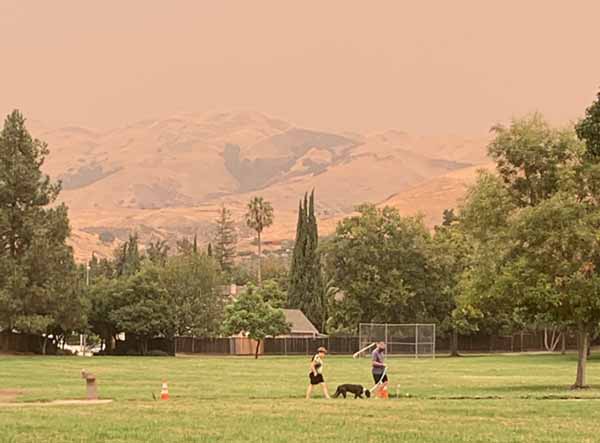



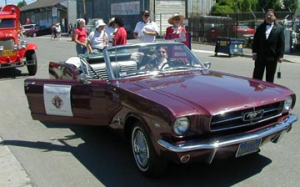
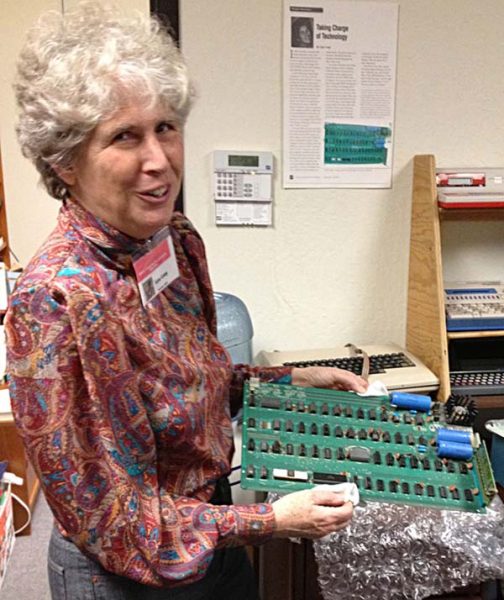
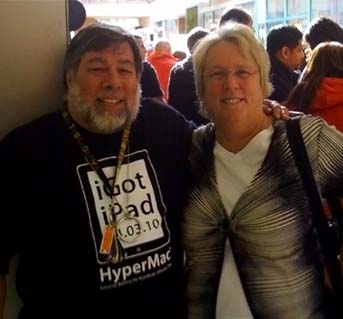
 Milpitas
Milpitas


